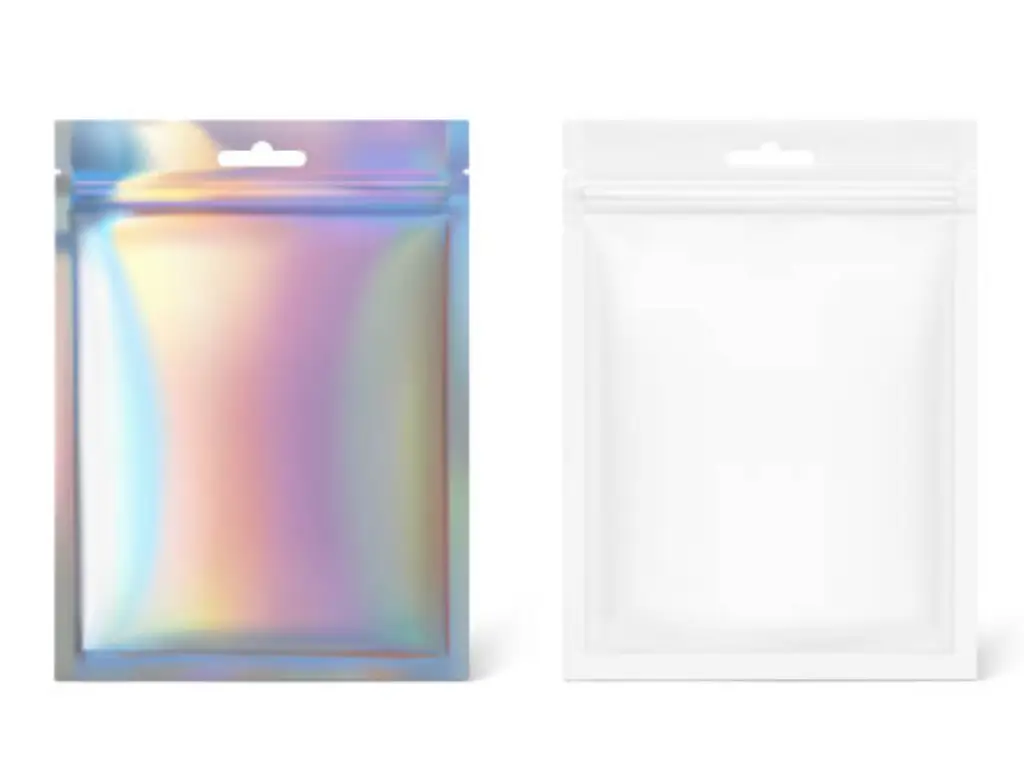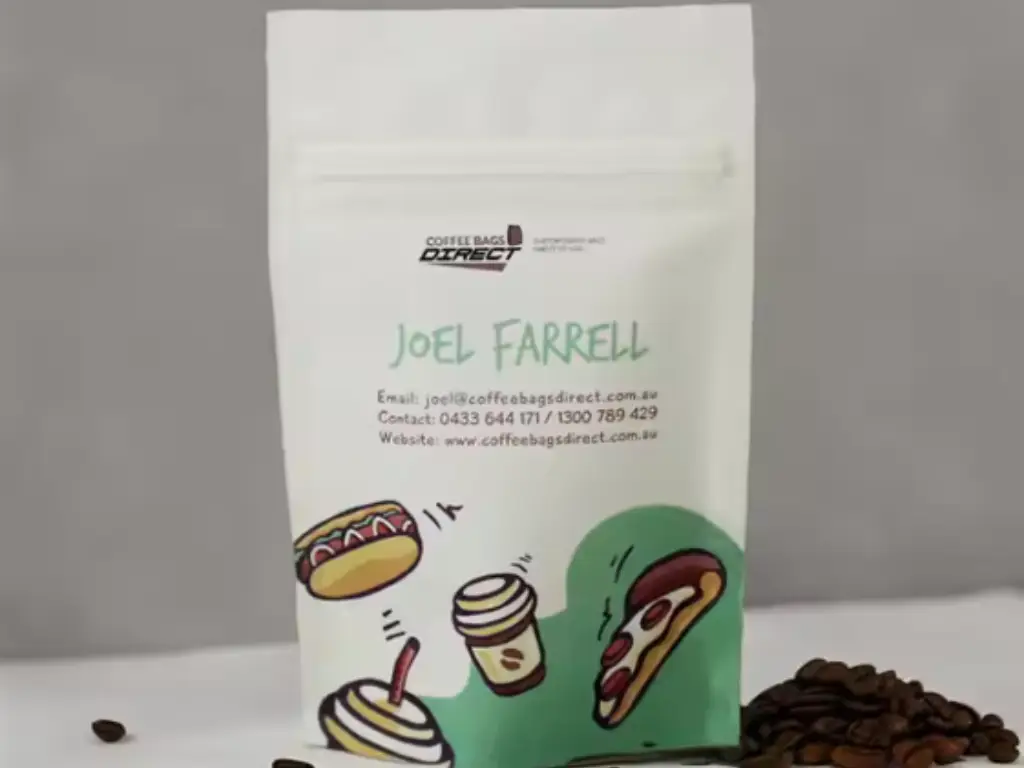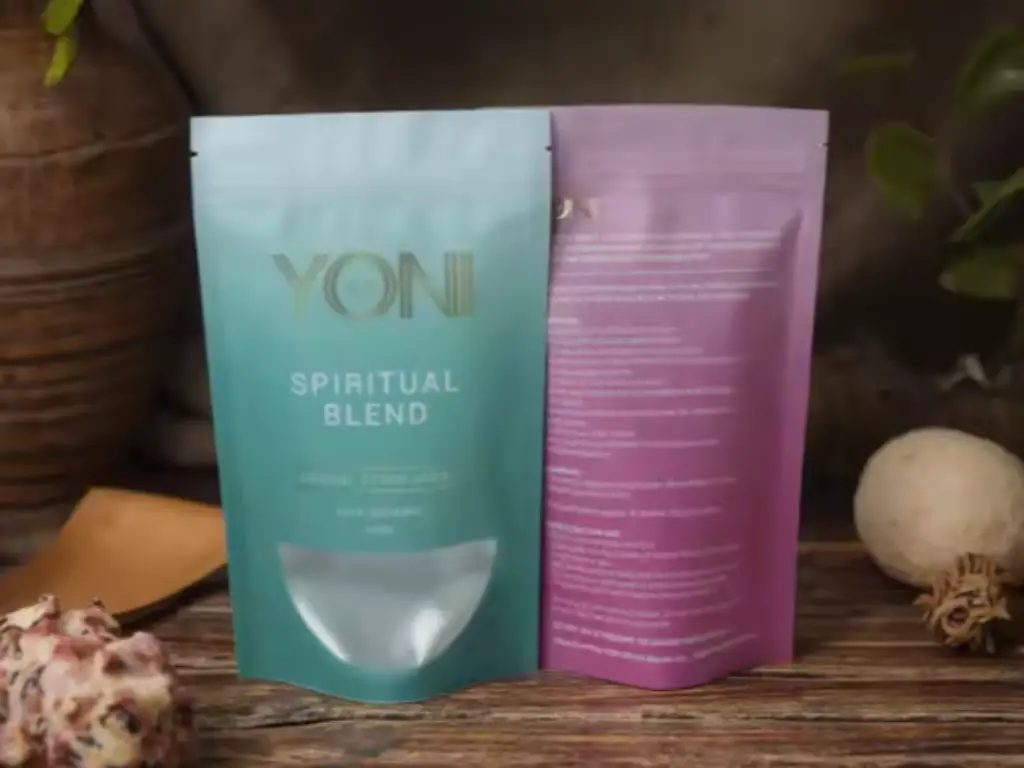The processes of household security are changing in the age of supply chain volatility and a new emphasis on preparedness. This is eloquently echoed by the steep increase in the demand of long-term food storage solutions. A report on market analysis by Future Market Insights suggests that the global Mylar bags market will grow to 1.9 billion dollars by 2033, at a compound annual growth rate (CAGR) of 4.8%, starting with 1.2 billion dollars in 2023. This information is not merely a business indicator; it is a direct indication that people and families are taking the initiative to find solid ways of securing their supplies.
Mylar has dominated this growing market because it is scientifically proven to be better. The professional makes this choice for a reason. The guide is meant to be your ultimate guide to mastering this essential skill. We are going to get past the anecdotal recommendations and get into the science and technique that makes Mylar bags the foundation of true safety, and you will be able to create a long-term food supply with accuracy and confidence.
Why Choose Mylar for Long-Term Food Storage?
As far as long-term food preservation is concerned, there is always a single material that stands out from the crowd: Mylar. Whether you are a homesteader, a prepper, or just creating a stable pantry, it is important to know why Mylar is so popular. It is not a hype but performance, reliability, and long-term protection. So, what makes Mylar the industry standard in the mylar bag food storage chart systems that are used by both professionals and households? Let us have a look.
High Barrier Protection Prolongs Shelf Life
The material used in mylar bags is the BoPET (biaxially-oriented polyethylene terephthalate), which has an outstanding resistance to moisture, light, and oxygen, the three most common factors of food spoilage. In comparison with the thin plastics or other regular pouches, mylar packaging bags are designed to be stored over a long period of time, which helps preserve dry goods and other food items against environmental hazards that promote deterioration.

Compatible with Oxygen Absorbers for Long-Term Preservation
Among the greatest strengths of Mylar is that it goes well with oxygen absorbers. When an absorber is sealed in the bag, the internal atmosphere of the bag becomes very low in oxygen, and oxidation is slowed down, and the growth of bacteria or insects like larvae is prevented. This is very important in prolonging the life span of food, particularly white rice, brown rice, oats, or cornmeal, which may be kept as long as 30 years when stored properly in gallon mylar bags.
Ideal for Emergency Preparedness and Pest Prevention
Mylar provides the ultimate peace of mind, whether you are a homesteader or just an emergency preparedness planner. It is non-tearable, waterproof, and insect-resistant. Food storage buckets with Mylar lining are a trusted barrier for many preppers. During turbulent times, when the food systems are fragile, Mylar-based storage guarantees your food products to be viable and safe in the long run.
Versatile for a Wide Range of Food Types
Mylar bags can support spices, legumes, dehydrated vegetables, and grains, among others. They are also available in a variety of sizes, from small ziplock mylar bags to large 5-gallon ones, so they can fit in any storage system. This material can grow with your storage needs, whether you are storing in a mason jar or a small pouch, or you are using a full mylar bag food storage chart to plan out a pantry system.
Proven and Widely Trusted in the Food Storage Community
Mylar is recommended by professionals, survival experts, and food storage writers because it is effective. It is not a hype; it is a proven and trusted food preservation technique. Mylar liners are now used in many commercial packaging arrangements to preserve shelf-stable food items. A world where inflation, supply chain disruptions, and climate events are becoming a bigger concern, a correct mylar bag food storage system is a prudent, long-term investment. Not just a bag; it is an engineered preservation system. By selecting Mylar, you will be selecting a professional, scientific method of protecting your most valuable resource.

Mylar Bag Food Storage Chart: The Complete Shelf-Life Reference
It is important to know which foods are acceptable to preserve in the long term and the shelf life of the food. This chart is based on the best practices and the result of thorough research to be the main source of reference. It presupposes the adequate packaging into an adequately sized Mylar bag with the proper oxygen absorber and storing in a cool, dark, dry place.
| Food Category | Food Item | Suitability | Est. Shelf Life | Critical Notes |
| Grains | White Rice | Ideal | 30+ Years | Avoid brown rice due to its high oil content, which will go rancid. |
| Hard Red/White Wheat | Ideal | 30+ Years | Must be stored whole. Once cracked or ground, shelf life drops significantly. | |
| Rolled Oats | Ideal | 25-30 Years | Instant oats have a shorter shelf life due to additional processing. | |
| Corn (Dent or Popcorn) | Ideal | 30+ Years | Must be completely dry. Ensure low moisture content before storing. | |
| Legumes | Dried Beans (Pinto, Black, Kidney) | Ideal | 30+ Years | Beans will become harder over time and require longer cooking. |
| Lentils | Ideal | 30+ Years | Excellent source of protein and one of the easiest foods to store. | |
| Chickpeas / Garbanzo Beans | Ideal | 30+ Years | Ensure they are split or whole, not processed into flour for maximum life. | |
| Flours & Mixes | All-Purpose White Flour | Good | 5-10 Years | Flour is more susceptible to compaction and requires more oxygen absorption. |
| Whole Wheat Flour | Poor | 6-12 Months | High oil content will cause rancidity. Not recommended for long-term storage. | |
| Pancake Mix (no fat) | Good | 5-10 Years | Must be a “just add water, oil, and egg” type. Mixes with powdered fat will spoil. | |
| Pasta & Noodles | Commercial Pasta (Semolina) | Ideal | 25-30 Years | Low moisture and oil content make it perfect for long-term storage. |
| Egg Noodles | Poor | 1-2 Years | The fat from the eggs will cause rancidity. | |
| Fruits & Veg | Freeze-Dried Fruits/Vegetables | Ideal | 25-30 Years | The gold standard. Light, nutritious, and extremely long-lasting. |
| Dehydrated Fruits/Vegetables | Good | 5-15 Years | Shelf life depends heavily on the residual moisture content. Must be crisp. | |
| Dairy & Fats | Non-Fat Powdered Milk | Good | 15-20 Years | Whole milk powder is not suitable due to its high fat content. |
| Powdered Cheese | Poor | 1-3 Years | High in fat and additives that degrade over time. | |
| Nuts & Seeds | Poor | 6-24 Months | Very high in oil. Will go rancid quickly, even with oxygen absorbers. | |
| Sugars & Salt | White Sugar, Honey, Salt | Ideal | Indefinite | Do NOT use oxygen absorbers. They are natural preservatives and will turn sugar/salt into a solid brick. |
Matching Oxygen Absorbers to Your Mylar Bag
The Mylar bag is the vault; the oxygen absorber is the active guardian within. Such individual packets have the iron powder that will react chemically with oxygen in the enclosed space, in effect scrubbing the air clean. More than 99.9 percent of the oxygen is removed, and a low-oxygen condition results that inhibits spoilage and kills insect eggs.
It is not a guesswork to use the right size. A too-small absorber will not remove all the oxygen, and the process will have been defeated. A large absorber in itself is no evil, it is only wasteful. An oxygen absorber is rated in cubic centimeters (cc) of oxygen that it can absorb. The following chart will give a good guide to the standard Mylar bag sizes with dry goods.
| Mylar Bag Size | Approx. Volume (cups) | Recommended Food Types | Suggested Oxygen Absorber (cc) | Recommended Material Thickness (mil) |
| 1/2 Pint (6×8″) | ~2 | Spices, dehydrated vegetables, herbs | 100cc | 5 mil+ |
| 1 Quart (8×12″) | ~4 | Cornmeal, oats, small portions of white rice | 300cc | 5–7 mil |
| 1 Gallon (10×16″) | ~16 | White rice, beans, lentils, dry goods | 500cc | 7 mil+ |
| 2 Gallon (14×20″) | ~32 | Pasta, mixed legumes, dried corn kernels | 1000cc | 7–8 mil |
| 5 Gallon (20×30″) | ~80 | Bulk white rice, soybeans, flour, cornmeal | 2000cc | 7–9 mil |
Quick Tips
● You can combine packets. Two 250cc = one 500cc. Just match the total.
● Once opened, use absorbers within 15–30 minutes. Store extras in a mason jar with ● another absorber to keep them fresh.
● Thin or budget mylar packaging bags may need extra absorber capacity.
● The shelf life of food depends on both sealing and absorber accuracy.
● Reference a reliable mylar bag food storage chart for best results.
To get a better idea of how various bag thicknesses and sizes appear and feel, you may want to visit the video below: Different Sizes and Thicknesses of Mylar Bags. It gives a useful graphic representation that supplements the graph above.
How to Seal Mylar Bags for Maximum Shelf Life
The seal is one final action on which the integrity of your entire system depends. Here, methodology and attention to detail are most rewarding. An imperfect seal is a waste of all the effort. Do not miss a step in this seven-step process.
- ● Assemble Your Equipment: You will need all of your equipment ready to go before opening your oxygen absorbers: your filled Mylar bags, a household iron or hair straightening iron that is set to high (cotton setting, no steam), a hard flat surface like a wooden cutting board, and your labels.
- ● Fill the Bag Methodically: Start by pouring your food product into the Mylar bag. Shake the bag gently to settle down the contents, but do not overfill. At the top, you also have to allow at least 2-3 inches of space to have a clean and wide sealing area.
- ● Introduce the Oxygen Absorber: Oxygen absorbers are vacuum-sealed and immediately start working when they come in contact with air. Work quickly. Pull out the number of absorbers that you can consume in a time frame of 15 minutes. Put one (or the necessary number) over the food in the bag. Put the rest of the absorbers back in a small glass jar or their original container right away.
- ● Expel Excess Air: Press the bag to squeeze out as much ambient air as you can and then seal. This saves the burden of the oxygen absorber and makes the end product smaller.
- ● Create the Seal: Lay the upper edge of the bag down on your hard surface. With the hot iron, press down firmly and make your first seal, which will take 2-4 seconds. To be on the safe side, it is prudent to have a second seal that is parallel to the first seal. This sealed area must be smooth, even, and wrinkle-free.
- ● Inspect the Seal: A good seal is a mark of workmanship. Let it cool for a moment and then pull it softly. It should not flake. Examine it visually to see whether it has any gaps or creases. At the seal, the bag must appear and feel like one fused item of material.
- ● Label with Precision: Write the bag with a permanent marker as soon as possible. The label should contain the following minimum: 1. The Contents, 2. The Date of Sealing, and 3. The Oxygen Absorber Used Size (cc). It is priceless information to be used in managing inventory in the future.
Why a High-Quality Bag is Critical for Success
You may have the most perfect sealing method, but all is in vain when the bag gives way. Mylar bags of poor quality may experience delamination, pinholes, or contaminated aluminum layers, which will ruin your entire food supply in the long run. Long-term viability and a good seal are strictly dependent on the quality of the packaging material.
When the operation requires a level of quality that is not to be compromised, such as large-scale food manufacturers and serious preparedness groups, a specialist manufacturer is essential. Baishen has unique strengths in providing experienced and highly versatile companies with digital flexible packaging pouches, especially for brands. Having more than 10 years of experience in the packaging bag industry, we offer a genuine one-stop shop with innovative packaging solutions, design, digital printing, laminating, slitting, and bag production. We have a group of dedicated people who are professional sales personnel and creative designers, and together we work with you to give you customized solutions and eye-catching designs that can take your product to a new level. Using state-of-the-art HP Indigo digital presses, we can provide high-resolution printing, which has 97% Pantone color matching and can run mixed SKU jobs, which guarantees both quality and efficiency. Added to our competitive factory-direct prices and our 7-10 working day digital turnaround time, it means that your high-quality, food-grade packaging bags can be manufactured in a hurry, at a low price, and with total quality control over the raw material sourcing process through to the finished, long-lasting and leak-free product.
Are you ready to innovate your packaging with a well-known partner? Contact Baishen today to discuss your custom mylar bag packaging requirements and get an individual quote.
Common Mistakes That Ruin Your Food Storage
Mastery involves not just knowing the correct procedure, but also understanding the common pitfalls. Avoid these critical errors:
- ● Mistake 1: Storing Unsuitable Foods.
Any food that contains a lot of oil or water will not be a good choice to store long-term, as explained in the chart. Keeping brown rice, nuts, or whole-wheat flour will result in rancidity and spoilage.
- ● Mistake 2: Mishandling Oxygen Absorbers.
Oxygen Absorbers Mishandling. By allowing absorbers to remain exposed to the air too long before sealing, they will become useless. Be prepared and do it well. A worn-out, badly stored absorber should never be assumed to work.
- ● Mistake 3: A Contaminated Sealing Area.
A Dirty Sealing Place. Any food dust, powder, or grease in the seal zone will provide a microscopic pathway of air entry. Whenever using heat, always clean the inside of the sealing area.
- ● Mistake 4: Inadequate Bag Thickness.
Although thin bags are less expensive, they are easily prone to punctures. 4.5 mil should be a decent minimum standard, and 7 mil is better durability on high-value items or long-term storage.
- ● Mistake 5: Forgetting the Secondary Container.
A sealed Mylar bag is proof against microbes, but not against rodents or physical damage. A rat can chew through a Mylar bag in minutes. Storing bags without the protection of a hard-shelled container is a critical oversight.

Best Practices for Storing Your Sealed Bags
When you have your mylar bags closed and your oxygen absorbers are working, what comes next? Storage. And not only flinging them into a closet. In case you are really serious about emergency preparation or long-term self-sufficiency, this step is just as important as sealing.
● Use Food-Grade Buckets or Storage Bins: Piling sealed bags on top of concrete or wood? Bad idea. Such surfaces can absorb moisture or produce temperature fluctuations. Rather, choose food storage buckets or plastic bins with closed lids.
● Label Everything Clearly: Put the kind of food, date of packaging, and the quantity (e.g., 3 lbs of white rice – packed July 2025). This can prevent confusion in case you are rotating stock regularly. There are still some preppers who consider absorber cc size consumed and the place of storage of large stocks.
● Store in a Climate-Controlled Area: Heat is the enemy. Try to have a storage temperature of 50-70°F. Basements are perfect- just make sure it is not wet. Never use garages unless insulated. Shelf life is severely decreased by humidity and temperature fluctuations.
● Keep an Inventory Sheet: This is particularly helpful when you have a lot of different foods in stock, such as legumes, dehydrated vegetables, spices, and oats. A good spreadsheet or a simple notebook can help you keep track of what you have packed and what you have to restock.
● Don’t Stack Too High: When you are stacking gallon mylar bags, do not pack more than 100 pounds of rice on the bottom layer. Use stacking or shelving to your advantage. Others put flattened cardboard in between the layers to spread the weight.
Finally, check on your stash as a routine. The occasional look every 3-6 months will keep you out of the surprise of popped seals or condensation. Good food preservation is not reactive; it is proactive.

